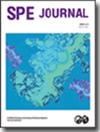泥浆泵普遍适用的基于状态的维护系统的现场验证
IF 3.2
3区 工程技术
Q1 ENGINEERING, PETROLEUM
引用次数: 0
摘要
尽管泥浆泵被认为是钻机的关键设备,但目前对其健康状况的监测仍依赖于不频繁的人工观察和监测。这种方法往往无法在早期发现泥浆泵的损坏,从而导致非生产时间(NPT),并在初期损坏发展到泥浆泵意外和灾难性停机时增加油井建设成本。由于缺乏适用于任何泵类型和/或运行条件的通用解决方案,迄今为止,基于状态的泥浆泵自动维护(CBM)方法均告失败。本文介绍了一种经现场验证、普遍适用的泥浆泵 CBM 解决方案。该系统使用包括声发射传感器和加速度计在内的传感器包,并结合异常检测深度学习数据分析来确定泵及其组件的任何异常行为。深度学习模型仅使用未损坏的正常状态数据进行训练,并计算出表征泥浆泵损坏程度的损坏分数,以识别最早的损坏迹象。然后,系统可以生成警报,通知钻机工作人员泥浆泵关键部件的损坏程度,从而采取主动维护行动。在美国德克萨斯州西部的一口非常规页岩井和日本的一口地热井(即两种截然不同的钻井作业)进行了现场测试,以验证所开发的泵煤层气解决方案的可行性和普遍适用性。在钻井作业过程中,传感器被连接到泵模块上,并使用深度学习模型收集和分析数据。在现场测试期间,对不同的超参数和特征进行了比较,以选出最有效的参数和特征,用于识别损坏,同时降低误报率(即正常状态下泵运行时的误报)。该系统只需要几个小时的正常状态数据进行训练,事先不需要泵的信息。此外,该系统还能正确识别泵、拭子和阀门的退化情况,并在钻井人员采取实际泵维护行动前数小时(0.5-17 小时)发出早期警报。这种普遍适用的泵 CBM 系统消除了人为观察泥浆泵健康状况时可能出现的环境、健康和安全问题,并避免了与灾难性泵故障相关的不必要的 NPT。该系统的最终版本将是一个完全独立的可磁力吸附盒,内含传感器和处理器,可生成简单的指示器,以便在需要时建议积极主动的泵维护任务。本文章由计算机程序翻译,如有差异,请以英文原文为准。
Field Validation of a Universally Applicable Condition-Based Maintenance System for Mud Pumps
Although mud pumps are considered to be critical rig equipment, their health monitoring currently still relies on infrequent human observation and monitoring. This approach often fails to detect pump damage at an early stage, resulting in nonproductive time (NPT) and increased well construction costs when initial damage progresses and pumps go down unexpectedly and catastrophically. Automated approaches to condition-based maintenance (CBM) of mud pumps to date have failed due to the lack of a generalized solution applicable to any pump type and/or operating conditions.
This paper presents a field-validated universally applicable solution to mud pump CBM. The system uses a sensor package that includes acoustic emission sensors and accelerometers in combination with anomaly detection deep learning data analysis to pinpoint any abnormal behavior of the pump and its components. The deep learning models are trained with undamaged normal state data only, and a damage score characterizing the extent of damage to the mud pump is calculated to identify the earliest signs of damage. The system can then generate alerts to notify the rig crew of the damage level of key mud pump components, prompting proactive maintenance actions.
Field tests were conducted while drilling an unconventional shale well in west Texas, USA, and a geothermal well in Japan (i.e., two very different drilling operations) to verify the feasibility and general applicability of the developed pump CBM solution. Sensors were attached to pump modules, and data were collected and analyzed using the deep learning models during drilling operations. During the field tests, different hyperparameters and features were compared to select the most effective ones for identifying damage while at the same time delivering low false positive rates (i.e., false alarms during normal state pump operation). The system required only several hours of normal state data for training with no prior pump information. Moreover, it correctly identified the degradation of the pump, swabs, and valves and produced early alerts several hours (in the range of 0.5–17 hours) before actual pump maintenance action was taken by the rig crew.
This generally applicable pump CBM system eliminates the environmental, health, and safety concerns that can occur during human-based observations of mud pump health and avoids unnecessary NPT associated with catastrophic pump failures. The final version of this system will be a fully self-contained magnetically attachable box containing sensors and a processor, generating simple indicators for recommending proactive pump maintenance tasks when needed.
求助全文
通过发布文献求助,成功后即可免费获取论文全文。
去求助
来源期刊

SPE Journal
工程技术-工程:石油
CiteScore
7.20
自引率
11.10%
发文量
229
审稿时长
4.5 months
期刊介绍:
Covers theories and emerging concepts spanning all aspects of engineering for oil and gas exploration and production, including reservoir characterization, multiphase flow, drilling dynamics, well architecture, gas well deliverability, numerical simulation, enhanced oil recovery, CO2 sequestration, and benchmarking and performance indicators.
 求助内容:
求助内容: 应助结果提醒方式:
应助结果提醒方式:


